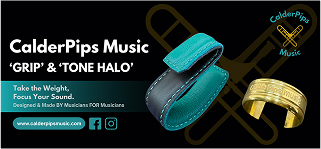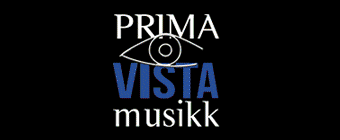The working lives of freelance players have been hit hard by the Coronavirus pandemic, so if you have the chance please get in touch with them and book some on-line lessons and tuition.
Question:
I play euphonium and have done for many years. I seem to have gained a throat vibrato over the last few years. I've never had a natural vibrato, usually resorting to using a straight sound.
Is there anything you could recommend for this?
DT's suggestion:
The throat vib thing is tricky and in my mind a habit that you would be best getting out of.
If I was working with you regularly I'd be asking for you to play without vibrato for a period (a week, maybe two) — using long notes (consistent in volume, tone quality and pitch), slow flexi exercises (maybe out of Charles Collin or Vizzutti Vol.1) and lyrical studies/pieces.
This would get you used to keeping the throat nice and relaxed (that starts with an open/relaxed intake of air) and blowing uninterrupted, resonant, flowing air through the instrument — but importantly without the vibrato at this stage.
Record yourself and listen for impurities in the sound, this will be where the air has dipped in flow or an obstacle has been put in place (eg: a tense throat or the tongue getting in the way). This is a little tricky to monitor yourself, put the recordings should be useful.
When you are more comfortable with this consistent and relaxed airflow then introduce a jaw vibrato. I use a jaw vibrato (rather than air vib, tongue vib, finger vib, etc) as it's the technique I find most versatile and the one that interferes with fundamental technique the least.
Two ways of working on this:
1. Sorting the mechanics and versatility of application
2. Developing a natural instinct of when/how to apply it to any given musical phrase.
Mechanics of the jaw vibrato:
Step 1:
Without the instrument take a deep breath and blow out for 8 beats. Keep an 'aww' shape to the mouth and lips. Whilst blowing out 'mouth' a wah wah wah action.
Get used to affecting the air in this way whilst keeping the airflow open/relaxed — the throat should stay relaxed and not be involved in affecting the air at all, only the wah wah wah from the lip. Listen to the sound of the airflow, even though the wah wah is effecting the 'pitch' of the air, the intensity and consistency of the air should remain the same.
Step 2:
Play a treble clef 2nd line G for 8 beats and use the same 'action' as above. Remember the long notes from earlier? Consistent sound, pitch and volume was the aim. Now we need to keep the consistent quality of sound and volume but the wah wah action will affect the pitch (in a controlled way).
It's at this point that I would normally demo a few exercises to do with control of the vibrato depth and speed — hard to describe without demos. Developing this mechanical control and versatility is key to being able to use vibrato effectively and expressively.
Step 3:
Use this newly rehearsed mechanical vibrato in a short phrase (maybe a hymn tune). Experiment with different speeds and different depths of vibrato (for now disregarding appropriate musical choice!).
Musical application:
Step 1:
Pick a lyrical piece you are working on that you also have a recording of performed by a player you enjoy listening to.
This doesn't have to be a euphonium piece or player. It could be a vocal item (listen to the vocal original), could be a cello piece (listen to a cellist playing it), etc. Try to emulate the vibrato you hear. Ask these questions: how fast is the vibrato? How deep is it? Does it ever change speed or depth? When and if it does change does it change suddenly or gradually?
Step 2:
A repeat of step 4 except you add a final question which will take some time and consideration. When you listen to the recordings of other artists, think about why they have made the vibrato choices they have made?
If it does change during a phrase, why did they change it at that particular point?
Hints: consider musical intensity and what dictates it — the shape of the phrase (as it reaches the high point is it more or less intense?), is it affected by harmony? Is it affected by tempo? Is it affected by style of the writing? Is it affected by the historical context of the work?
NB: Always remember that when considering appropriate musically minded use of vibrato, one of the options is to use none at all!!!!
Vibrato is a huge subject and I'm only scraping the surface here really. As you have already found out, it can also be a minefield for creating bad habits so I would also suggest seeking some semi-regular lessons at some point to ensure good practice is in place.
Always remember that when considering appropriate musically minded use of vibrato, one of the options is to use none at all!!!David Thornton
Any questions?
If you have any questions you would like David to answer, just get in touch with him and we will put it up on 4BR to help others as well.
David can also be contacted for private on-line tuition at: thorntoneuph@gmail.com
Find out more about David: www.davethornton.co.uk
Twitter: www.twitter.com/thorntoneuph
David Thornton's YouTube Channel: www.youtube.com/user/thorntoneuph



















